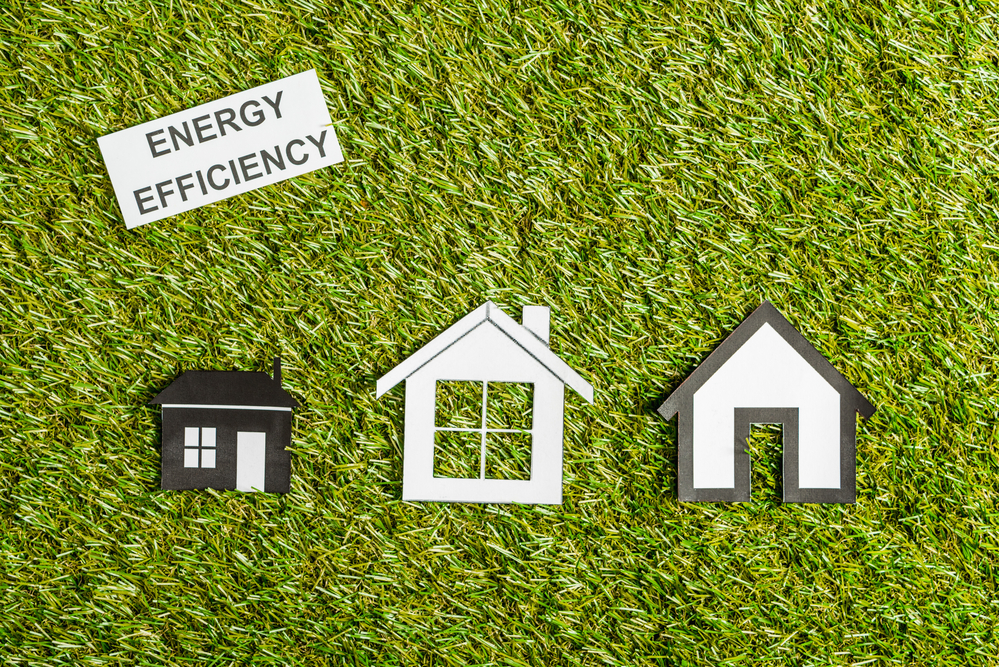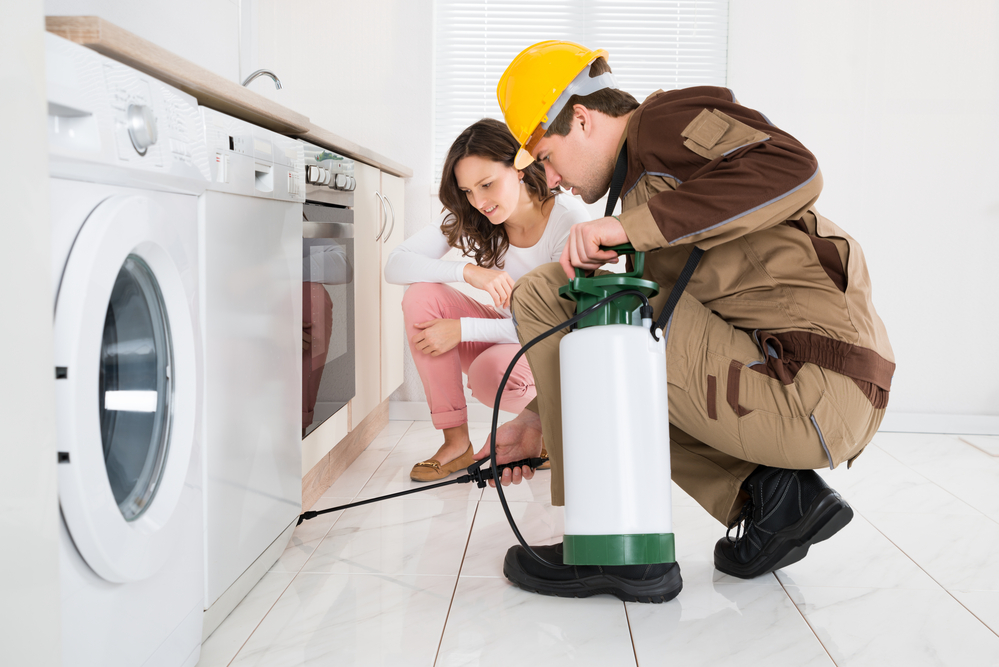Let’s be honest: Nobody likes bugging family members to tweak the thermostat or air conditioner for energy savings gains. Facing record-setting temperatures and rising energy costs, most homeowners need to figure out how to strike the perfect balance between comfort and cost-efficiency — which is no easy feat.
But with climate change wreaking havoc on local power grids and wallets, finding ways to keep your home comfortable without draining resources is more important than ever before.
To keep costs down but stay cozy all year long, you should do everything you can to reduce your carbon footprint by creating an energy-efficient house.
Read on to learn more about energy efficiency, why it’s essential, and some home improvement tips for making your slice of real estate more sustainable and cost-effective.
What is an energy-efficient home?
An energy-efficient home is a property that optimizes energy usage and minimizes environmental impact. Energy-efficient homes are built with features and technologies designed for efficient energy use throughout the house, including heating, cooling, lighting, and appliances.
Most new homes today come with built-in mechanisms engineered for maximizing energy. But you can also make an older home energy-efficient by making upgrades and repairs. So, in the event you’re eyeing a dream house that’s behind the times, don’t let dreams of energy efficiency hold you back.
Why does energy consumption matter?
According to a recent report, U.S. electricity use per capita is the highest out of any major economy — by far. Each person in the U.S. consumes about 12.87 megawatt hours of electricity each year, which is three-and-a-half times higher than the global average.
What’s more, electricity generation is the second largest source of greenhouse gas emissions in the U.S. after transportation, accounting for 25% of national emissions. Looking forward, the country’s demand for electricity will only increase as auto fleets become increasingly electric.
Good news: As a new homeowner, you can help reverse this trend by embracing energy-efficient practices. With all this in mind, let’s take a look at some key reasons why reducing your energy footprint at home is the smart move.
Save energy
Excess energy usage puts pressure on local infrastructure, impacting the entire energy supply chain. When households consume excessive energy, the power grid has to work harder to meet demand. As a result, energy companies may have to adjust their pricing structures to accommodate peak usage times.
By curbing energy consumption at home, you’ll do your part to promote efficient resource consumption. This helps keep costs down for everyone while preventing overloads and reducing the likelihood of disruptions.
Reduce emissions
Energy consumption from fossil fuels produces greenhouse gas emissions, which create air pollution and contribute to climate change.
Lowering energy consumption at home reduces emissions, helping mitigate the harmful effects of climate change like rising sea levels and extreme weather events.
Lower energy costs
You’ll also save money by incorporating energy-efficient features and practices that minimize energy and resource consumption.
According to the U.S. Office of Energy Efficiency and Renewable Energy, the average American spends $2,000 paying for energy each year. Making matters worse, $200 to $400 of this chunk is wasted on drafts, air leaks around openings, and outdated heating and cooling systems.
By making energy efficiency upgrades, you can reduce financial waste and make your home more comfortable — all while doing your part to protect the environment.
What upgrades can you make to lower your energy bills?
Making small changes and investments can go a long way toward reducing energy consumption and lowering your bill. Here are some of the ways you can improve energy efficiency in your home.
Modernize your HVAC systems
If you have an older property, your heating, ventilation, and air conditioning (HVAC) systems could contribute to energy waste. Consider upgrading to eco-friendly systems to reduce energy consumption and lower monthly bills. While you’re at it, get in the habit of paying for routine maintenance, which can also help improve efficiency.
Install a programmable thermostat
Consider replacing your outdated thermostat with a programmable model that will enable you to set different temperatures throughout the day. Such devices enable you to optimize heating and cooling based on your schedule so you can avoid unnecessary energy consumption when you’re not at home.
Insulate and seal cracks
One of the secrets to energy efficiency at home is preventing heat loss in the winter and cool air leakage during the summer. To accomplish this, identify areas where air escapes through cracks and gaps. You can do this by installing foam insulation and air sealing any gaps or cracks, which can reduce the load on your systems and save energy.
Install LED lighting
Light-emitting diodes (LEDs) are an energy-efficient and long-lasting alternative to traditional light bulbs. High-quality LED light bulbs can last for tens of thousands of hours, saving you a good chunk of change over the lifecycle of the unit.
In addition to savings, LED lights don’t contain hazardous materials like mercury, which is common in fluorescent bulbs. They are also recyclable and help reduce carbon emissions. Plus, they fit into standard light sockets, so you don’t have to rip and replace any fixtures to install energy-efficient lighting.
What is a smart home?
A smart home is a residence that uses automation and connected technology to enhance comfort, security, efficiency, and convenience. Inside a smart home, devices and systems — like smart thermostats, refrigerators, stoves, heat pumps, security systems, and lighting systems — are connected through the internet of things (IoT), and you can control them via your smartphone.
Did you forget to turn the lights off when you went to work in the morning? There’s an app for that.
In addition to curbing energy usage, intelligent devices can make your home more attractive to potential buyers. As a modern feature, they can also increase the value of your home.
Tips for making your home more energy efficient
You don’t have to go overboard when making your home more energy-efficient. In fact, making a few minor changes can have a big impact. With that in mind, the following tips can help you slash home energy use.
Conduct an energy audit
Before you make any changes, conduct an energy audit to identify energy waste and form an improvement plan. Start by gathering utility bills from the last year and begin analyzing your energy consumption patterns to see if there are any significant changes and seasonal variations.
Once that’s done, walk through your home and see if you notice specific areas that may contribute to energy loss — like drafts, inadequate insulation, and inefficient appliances. While you’re at it, evaluate lighting fixtures and your HVAC system to see what shape they’re in.
Embrace renewable energy and install solar panels
By installing solar panels on your property, you may be able to power your home with renewable energy and reduce your reliance on the power grid. While solar panels can be expensive to install, you can potentially lower your utility bills over time — assuming you stay in your house long enough to break even on the investment.
Some power companies also incentivize solar panels by allowing you to sell power back to the grid — a strategy known as metering. If you have a home that’s capable of producing more solar energy than you consume, it’s worth checking whether this is an option in your area.
Upgrade to energy-efficient appliances
One of the most surefire ways to improve energy efficiency is to replace older appliances with Energy Star-certified models. These appliances — including refrigerators, dishwashers, dryers, and washing machines — use less energy while providing the same functionality as their older counterparts. Sometimes, they’re even better.
As an example, water heaters are a common source of energy waste, accounting for roughly 13% of annual residential energy usage and consumer utility costs. If you have an old water heater, consider lowering your water heater temperature or upgrading to an eco-friendly model.
Limit screen time
The average person now checks their phone 144 times per day — in addition to watching television, using a laptop or tablet, and playing video games. Multiply that times three or four family members, and it’s easy to see how devices can consume a lot of energy.
Limiting screen time at home reduces power consumption and contributes to a more energy-efficient lifestyle. Plus, it gives you time to engage in the old-fashioned art of having actual conversations with real human beings!
Unplug devices
Look around your house and try to find all the items that connect to an outlet when they aren’t in use — like floor fans, television monitors, charging docks, and coffee machines. Believe it or not, these devices contribute to phantom energy consumption even when they’re not on. When devices are off or in a standby state, they consume small amounts of power. By making sure devices you aren’t using are unplugged, you can cut off standby power consumption and reduce energy waste.
Learn to love cold water
Everyone uses hot water throughout the day. We take hot showers, we wash our clothes and dishes in hot water, and we use hot water to cook. Unfortunately, hot water doesn’t appear out of the ether. You need to heat it up, which requires energy.
Consider washing clothes with colder water and start taking cold water showers to reduce your consumption. As a bonus, you’ll probably take shorter showers and use less water!
Plant shade trees
Another way to make your home more eco-friendly is to plant shade trees in areas with a lot of sunlight. This landscaping hack can reduce the need for home cooling. As an added bonus, you may also increase your property value by improving your property’s visual appeal.
There are all sorts of shade trees; some common examples include maple, oak, elm, cottonwood, beech, and ginkgo. If you’re thinking about planting some of your own, check with your local environmental agency and ask what they recommend for your area.
Reduce your reliance on air conditioning
If you’re the kind of person who keeps their house frozen during the summer, you’re wasting a ton of energy. Even with soaring temperatures, many homeowners go overboard with cooling.
If you want to reduce energy waste, consider turning your air conditioner up a bit. Better yet, turn it off when you can and open windows to let the fresh air in. Of course, you can also switch to ceiling and floor fans, which can help distribute air and cool things down.
Air dry clothes
If you have space, ditch your dryer for a clothesline or drying rack. In addition to cutting back your energy usage, you’ll also prolong the life of your clothes. Air drying helps maintain fabric quality, reduces shrinking, and preserves elasticity. It’s also a great reason to get outside.
What are energy rebates?
Energy rebates are financial incentives that utility companies, nonprofits, and government agencies like the U.S. Department of Energy offer to encourage individuals to invest in energy-efficient technologies and practices.
Rebates typically involve a partial refund or discount on the purchase price of energy-efficient products and services. Most of the time, energy rebates are attached to appliances, vehicles, HVAC systems, renewable energy systems, and other similar items.
It pays to prioritize energy efficiency!
While making a house energy-efficient takes time and money, that money’s well-spent. Not only does an energy-efficient house put more money in your wallet each month, it also helps you reduce your impact on the environment.
That said, it’s much easier to buy a property with smart appliances, solar panels, and energy-efficient windows than to do all the work yourself.
That being the case, consider prioritizing energy efficiency when you buy your first home. At the end of the day, all homebuyers should research properties before visiting them, ask questions during walkthroughs, and consult with energy inspectors and local agencies to understand how different types of homes consume energy. Before agreeing to a deal, ask the seller to share utility bills with you to get a better idea of how much you can expect to spend on utilities each month.
By asking about energy consumption before making an offer on a house, you can potentially save thousands of dollars in upgrades and enhancements over the years. Who ever thought you’d care so much about a washer or an HVAC system!
Of course, energy is just one thing you should look into before making an offer on a home. To learn more about other considerations you should make, read this: 10 Questions to Ask Before Making an Offer on a Home.
Disclaimer:
The content provided on this website is offered for educational purposes only. While we endeavor to provide accurate and up-to-date information, we make no representations or warranties of any kind, express or implied, about the completeness, accuracy, reliability, suitability, or availability of the content for any purpose. Visitors are advised to consult with qualified experts before making any financial decisions or taking any actions based on the information provided on this website.










